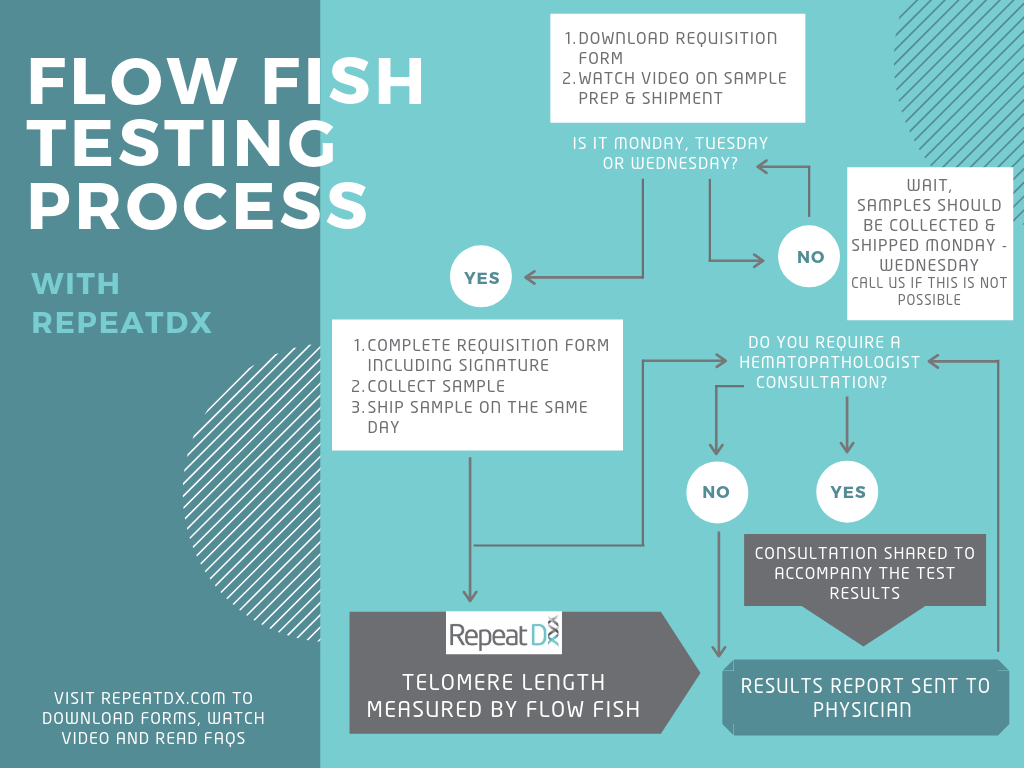Flow FISH telomere testing is a well-established process used for determining telomere length. In this blog we explore how it works and what the results can show us…
What is Flow FISH and how does it work?
Flow FISH is a telomere measurement technique that combines the use of fluorescent in situ hybridization (FISH) with flow cytometry.
White blood cells (leukocytes) are isolated from a blood sample and mixed with fluorescent peptide nucleic acid (PNA) probes that bind specifically to the telomere repeats (TTAGGG). After excess probe is washed away, the DNA is counterstained to consider cells in a resting state. The level of fluorescence is then measured, one cell at a time, using a flow cytometer.
Numerous modifications and improvements have been made to the protocol to ensure that the test is of the highest quality and is the most reproducible telomere length test available on the market.
The process of coordinating telomere length testing with RepeatDx is outlined below.

What do the results show?
The results of a Flow FISH test show the patient’s median telomere length reported in relationship to age-matched controls. These are available for all age ranges from pediatric to geriatric and for different blood cell subsets considered individually.
The median telomere length value is displayed on graphs, visually demonstrating the results against the age-matched percentiles. Each result is categorized on a scale from Very Low (<1st percentile) to Very High (≥99th percentile).
These results can be instrumental in the identification of patients with various disorders resulting from inherited abnormalities in telomerase genes – known as telomere biology disorders (TBDs).
The clinical sensitivity and specificity for Flow FISH telomere length analysis have been defined for the diagnosis of dyskeratosis congenita.
Why Flow FISH?
Flow FISH telomere testing has the unique advantage over other testing protocols as it provides results on a variety of individual cell types from one blood sample. As the fluorescent signals are assessed on a single cell basis using flow cytometry, patient results can be individually reported for lymphocytes, granulocytes, B-cells, naïve and memory T-cells, and NK cells.
This innovative technique allows analysis and comparisons of the telomere length between different cell types and within one cell type, e.g. in differentiating between constitutional deficiencies and specific cell type deficiencies.
What is required for a Flow FISH telomere test?
In addition to the standard personal information collected for medical testing such as patient name, age and sex, the test requires 5-10ml of blood. No special preparation or fasting is required.
RepeatDx is the leading laboratory offering the highest quality Flow FISH telomere length testing, providing accurate and reproducible results performed to thorough clinical and quality control testing standards.
You can find out more information, download requisition forms and watch the video mentioned in the flowchart here.
